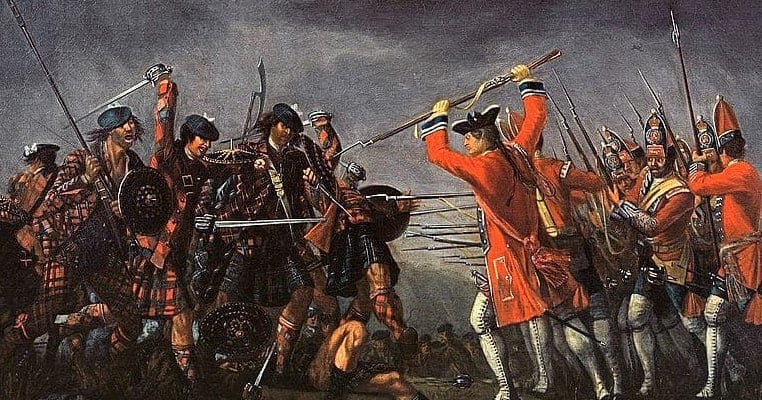The Jacobite Rebellions were a series of conflicts in Great Britain and Ireland, a bloody time period in which the Catholic and Jacobite factions struggled to restore a Catholic Monarch to the thrones of Great Britain and England. The Jacobites were initially supporters of King James the II of England and VII of Scotland, the term Jacobite coming from the Latinized James, Jacobus. As the series of conflicts went on, the ascension of the Catholic House of Stuart to the thrones of Great Britain became their goal. The Jacobites enjoyed the support of the Catholic monarchs in Europe, especially of France and Spain. The conflicts began in the late 17th century and continued until the Seven Years War, when a planned invasion of Ireland and England by the French drew Jacobite support.

As with most religious wars, the series of uprisings and outright warfare were particularly bloody, noted for the brutality practiced by both sides. They began with the Glorious Revolution which led to the overthrow of James II in England, the result of his son-in-law’s successful invasion of Britain with the support of a Dutch fleet. The flight of James to France led to bloody insurrection against the new British monarchs William and Mary in Ireland and Scotland, as well as considerable upheaval in Britain’s North American colonies. The creation of a Bill of Rights by Parliament ended the possibility of the return of an absolute monarchy, and severely hampered the restoration of a Catholic monarchy in Great Britain without wars between the Protestant and Catholic powers. And it brought about nearly a century of bloody conflict.
Here is a list of the bloodletting which occurred in the series of violent uprisings known together as the Jacobite Rebellions.

1. The Williamite War was the beginning of what came to be known as The Troubles in Ireland
The Williamite War was known by an Irish name which translated loosely to the War of the Two Kings. Prince William of Orange, who deposed his uncle and father-in-law James II, became King William, supported by the Protestants who mostly resided in the north of Ireland and became known as Williamites. The Catholics who supported King James, and who received military aid from Catholic France, became known as Jacobites. One of the great ironies of the wars were that the Protestant William of Orange received financial support in the form of loans from the ruler of the Papal States, Pope Innocent XI, who was more concerned with French political power than the religion of the occupant of the British throne. Innocent was concerned about French threats to his own continental influence.
During the Williamite War, the Battle of Newtownbutler between trained Williamite troops and an irregular Jacobite force revealed the ferocity that would mark the rebellions. The force of about 3,000 Jacobites began to withdraw immediately after coming under fire. Williamite cavalry pursued them and cut them down mercilessly. Men trying to surrender were slashed to death under Williamite swords. More than 500 fleeing Jacobites tried to flee the assault by swimming across Lough Erne, reports were that but one survived. Jacobite officers were spared from death and imprisoned to be either exchanged for Williamite prisoners or executed in captivity. Enniskillen, in Western Ulster, became the scene of longstanding grudges between Catholics and Protestants being resolved through guerrilla raids, outright murder, and the destruction of property, sanctioned by the victorious Williamite troops.

